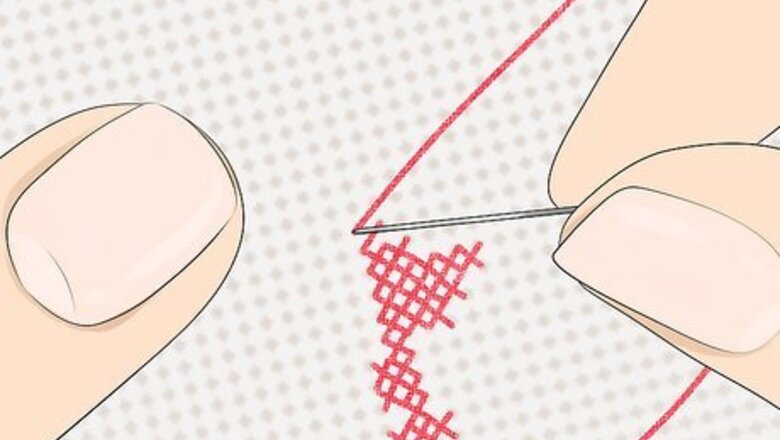
views
- Cross stitch is a type of embroidery that mainly uses a single stitch. Hand embroidery uses many different types of stitches.
- Cross stitch is done on Aida cloth with a tapestry needle, while embroidery is usually done on cotton fabric with a sharp needle.
- Typically, cross stitch is easier for beginners to pick up on than embroidery is.
Cross Stitch
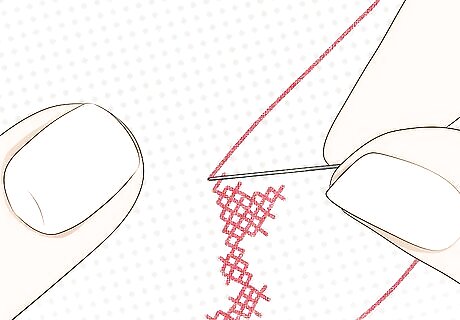
Cross stitch is a type of embroidery called “counted needlework.” As its name implies, cross stitch is created by making small crosses, or “X”s, out of thread. Cross stitch is a counted needlework, meaning that you’re counting the number of spaces that you need to fill in with each color. Curious about needlepoint? Doing needlepoint is very similar to doing cross stitch, although it uses more stitches than cross stitch does.
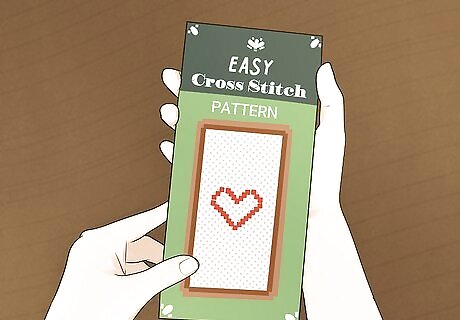
Cross stitch is typically done by working off of a pattern. Many beginners love starting with cross stitch because the patterns tell you exactly how and where to put your stitches. When you see these delicate, intricate finished pieces, it’s likely that the creator was working from a pattern. As you get more advanced in cross stitch, you can even make your own cross stitch pattern out of your own unique design.
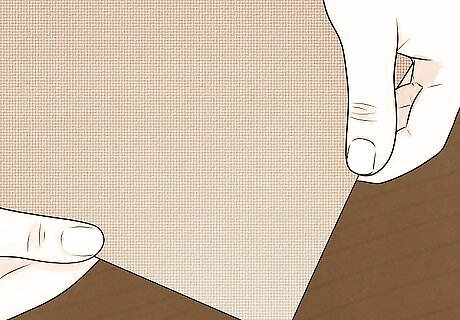
Cross stitch is usually done on Aida cloth. Aida is a type of stiff fabric with small holes in it that you can push your needle through. Up close, it almost looks like a sheet of graph paper, with rows and columns to follow. This makes it super easy to create your small Xs, since all you’re doing is filling in the boxes.
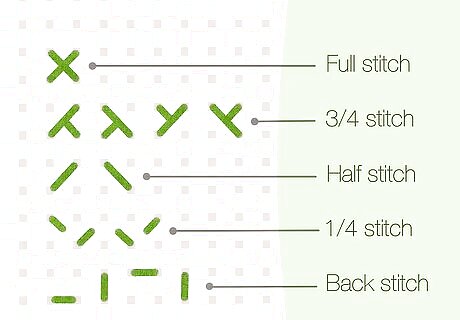
Cross stitch is done using cross stitches, half stitches, and backstitches. In cross stitch, there are only 3 main stitches you’ll be using. The most common one is the cross stitch itself, or creating small Xs out of thread. The half stitch is half of an X: instead of crossing 2 threads over each other, you simply use your thread to create 1 diagonal line. Backstitching is a very simple stitch that’s normally used for outlines.

Finished cross stitch pieces lay flat on the fabric. Cross stitch designs typically don’t have a ton of texture to them, which makes them super easy to frame. Unlike embroidery, which may use 3D stitches, cross stitch only uses flat stitches. Similarly, cross stitch designs don’t usually blend colors together. Instead, you’ll create small stitches using multiple different colors to form a color gradient.
Embroidery
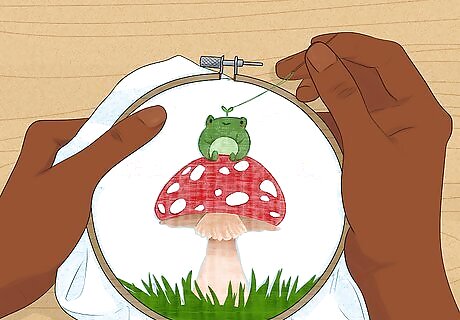
Embroidery is a catch-all term for any sort of stitching on fabric. When people use the term “embroidery,” they could be referring to hand embroidery, machine embroidery, punch needle, needlepoint, freehand embroidery, candlewick, or even crewel work. However, when most people say “embroidery,” they’re referring to hand embroidery. Hand embroidery is commonly compared to cross stitch, since it uses very similar materials. Other embroidery techniques aren’t as similar, and they aren’t quite as easy for beginners, either.

Embroidery can follow a pattern, but it’s very easy to freehand, too. Since embroidery is a bit more free-flowing, you aren’t counting stitches, and can really put your needle and thread wherever you want. You can absolutely follow a pattern, but typically it’s just an outline on fabric that you fill in with thread. When most people make an embroidery pattern, they simply either draw, trace, or print an outline of their design onto fabric.
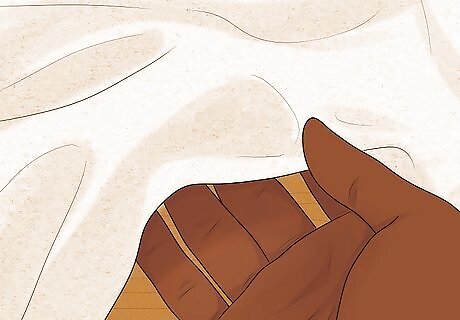
Hand embroidery is usually done on cotton fabric. While embroidery can be done on other types of fabric (like denim, velvet, and even silk), the easiest and most common to work with is cotton. Cotton is stretchy without getting warped too easily, and it’s very forgiving, too. Silk, for example, is much more difficult to handle, and with it you’ll want to always trace your design first and follow the tracing precisely.
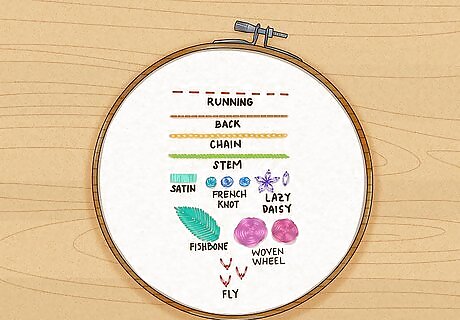
Embroidery can use hundreds of different types of stitches. While this may sound overwhelming, it’s actually great to have some variety! When you first start embroidery, you’ll probably use basic stitches, like backstitch and satin stitch. As you get more advanced, you might graduate to stitches like: Lazy daisy French knots Herringbone stitch Chain stitch
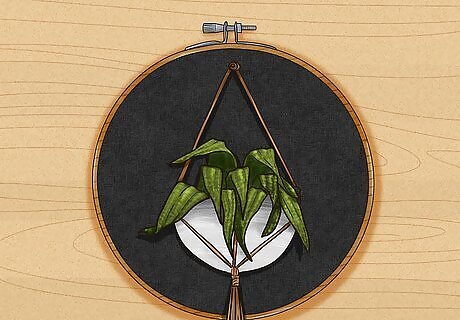
Finished embroidery pieces can have 3D elements. Many of the stitches used in embroidery aren’t flat, and seem to leap off the fabric at you. In embroidery, it’s much easier to blend colors together, too (also called needle painting). Therefore, your finished product can have a smooth color blend that’s pleasing to the eye.
Differences Between Cross Stitch and Embroidery

Stitches In cross stitch, there’s only 1 main stitch you need to learn: the cross stitch! While there are a couple others that can be helpful (like the half stitch and backstitch), you only need 1 stitch for most patterns. On the flip side, embroidery typically uses multiple stitches, even within the same pattern. There are almost an infinite amount of stitches you could learn for embroidery, which makes each design you do fun and interesting.
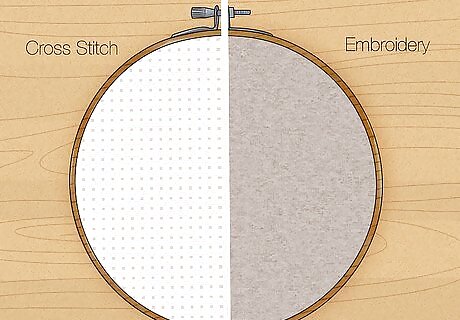
Fabric Cross stitch is done on Aida, a stiff form of fabric with holes in it. Embroidery is usually done on cotton fabric, which does not have any pre-made holes. To hold the fabric taut for both methods, you’d typically use an embroidery hoop.
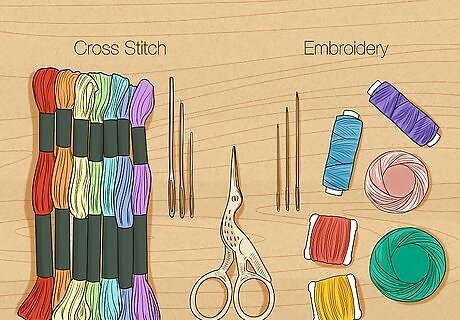
Supplies Cross stitch is usually done with a blunt tapestry needle, while embroidery can be done with a sharp needle. And, while cross stitch is usually done with embroidery floss, embroidery can use a variety of threads, including wool thread, ribbon, or even yarn.
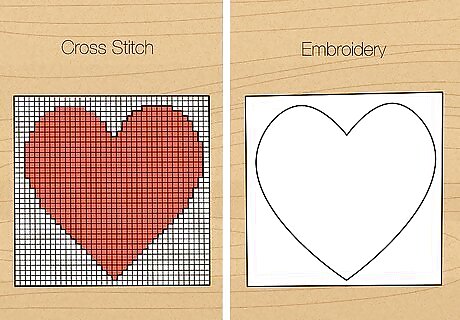
Patterns Patterns for cross stitch are much more detailed and exact, telling you which square to put each color inside of. For embroidery, patterns aren’t as rigid, and you can work outside the box a little while still getting a beautiful finished product.
Is cross stitch easier than embroidery?

Yes, most people find that cross stitch is easier than embroidery. For beginners, cross stitch is easier to pick up because of the detailed patterns and the simple stitching involved. If you’d like to start cross stitching today, grab a beginner’s kit that comes with everything you’ll need to make your first project. This is not to say that you can’t try embroidery if you’d like to! There are also tons of beginner embroidery kits you can start out with, too. Just keep in mind that it may take a bit more time to pick up on than cross stitch would.













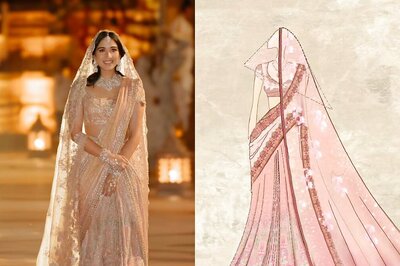



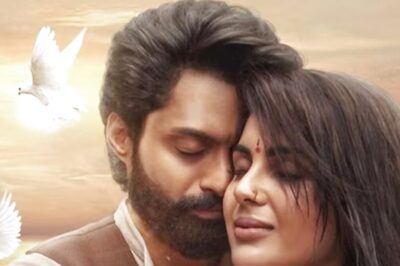
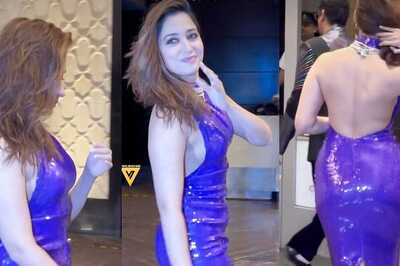
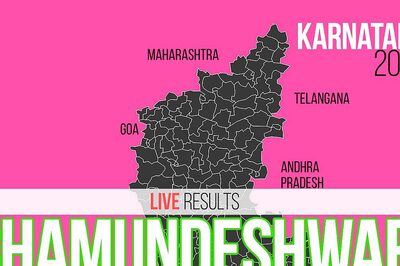
Comments
0 comment